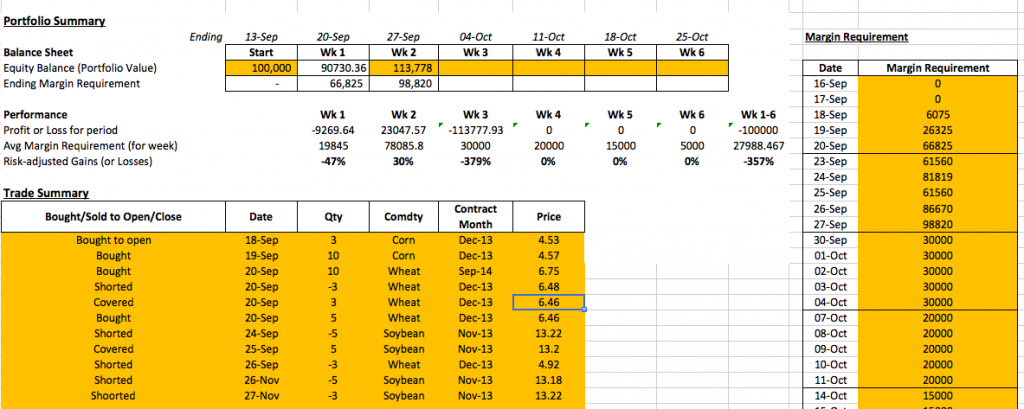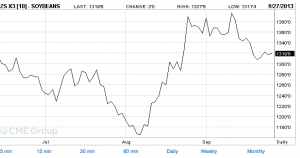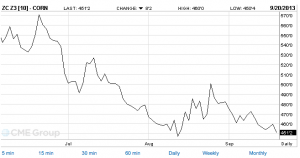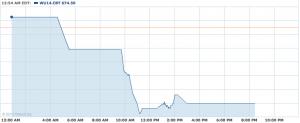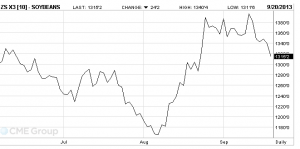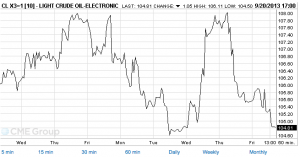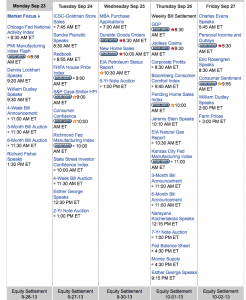Portfolio Summary of Week Two:
This Week’s Research and Personal Reflection:
Corn
According to the report of US government, the projected corn production in 2013 is 80 million bushels higher than the record (13.8 billion bushels). However, the sales of corn (including domestic consumption and exports) fell 10 percent in the fiscal year that ended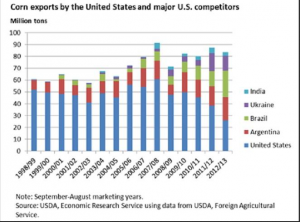 on Aug. 31, 2013. This is the biggest fall since 1975. The increasing supply of US corn and the decreasing the demand of US corn may pressure the price of corn future to go down further, at least in the short run. From long run prospective, the increased stock capacity of corn may allow the farmers to sell their corn when price goes up. In addition, China, one of the largest agriculture commodity importers, consistently shows interest in importing huge amount of corn from the US. It seems that the downward pressure of corn future may be limit in the long run.
on Aug. 31, 2013. This is the biggest fall since 1975. The increasing supply of US corn and the decreasing the demand of US corn may pressure the price of corn future to go down further, at least in the short run. From long run prospective, the increased stock capacity of corn may allow the farmers to sell their corn when price goes up. In addition, China, one of the largest agriculture commodity importers, consistently shows interest in importing huge amount of corn from the US. It seems that the downward pressure of corn future may be limit in the long run.
Wheat
In this week, the price of wheat future continually rose and climbed to a two-month high. I think that there may be two reasons that can explain it. Firstly, since the major areas of the 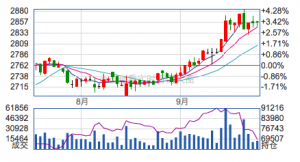 wheat production have suffered flood, the price of wheat in China boost dramatically in this month (about 3.4%). The Chinese government may have strong incentive to import wheat to keep down the domestic price. Thus, the traders expect tremendous import demand from China. Another
wheat production have suffered flood, the price of wheat in China boost dramatically in this month (about 3.4%). The Chinese government may have strong incentive to import wheat to keep down the domestic price. Thus, the traders expect tremendous import demand from China. Another reason is that the wheat belt in Argentina has been hit by frost. It may damage the crops. If Argentina, the world’s third largest wheat exporting country, suffers yield loss, the export supply of wheat in the worldwide may decrease remarkably and the price of wheat may increase significantly.
reason is that the wheat belt in Argentina has been hit by frost. It may damage the crops. If Argentina, the world’s third largest wheat exporting country, suffers yield loss, the export supply of wheat in the worldwide may decrease remarkably and the price of wheat may increase significantly.
Soybean
The harvest season of soybean is coming. Although it is hard to predict the accurate yield of soybean in the US, according to the USDA report, if there is no extreme weather condition, the projected yield of soybean is still high, compared to the history data. In addition, in this year, Brazil is going to overtake the US to be the top soybean producer. It anticipates that the yield of soybean in the South American will be a record high in 2014. All these reasons may continue to pressure the price of soybean future downward.
What did I do this week:
Based on my research, I did
- Continued to hold wheat future
- Shorted the Soybean Nov13
The Lessons I leant from this week’s trading game:
No impulsive decisions. In the last week, I bought 13 units Corn Dec13 and lost money.  Thus, I shorted 3 units of long-term Corn future in this week without doing any research and hoped to reduce the loss. I thought this might reduce risk. On Thursday, however, I found that I loss money on both short-term corn which I bought and long-term corn which I shorted (Sigh~).
Thus, I shorted 3 units of long-term Corn future in this week without doing any research and hoped to reduce the loss. I thought this might reduce risk. On Thursday, however, I found that I loss money on both short-term corn which I bought and long-term corn which I shorted (Sigh~).
Don’t be too greedy. According to my research of last week, I found that this is not a good time to buy corn. Thus, I watched the price change of corn regularly and wanted to sell it when my loss can be covered. However, when the price of corn went up, I did not sell it and wanted to gain more profit. The ending of my corn story is that I loss $1350 after the market closed on Friday.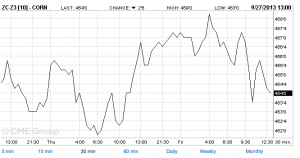
Believe the research and ignore small fluctuations of the market. Here is the lesson that I learnt from my soybean trade. I shorted 5 units of Soybean Nov13 on Monday. On Wednesday, the price of soybean went up a little bit. I was afraid of losing money again, so I covered my soybean at that day. Although I earned $275 from this trade, the price trend of soybean future is still going down in the following days.
Highlight Event of this Week:
US Stock falls as the Federal Government Faces Possible Shut Down
U.S. stocks fell this week. This is the first weekly drop of Standard & Poor’s 500 Index since August. No evidence in the economic data shows the US will face a recession, the budget impasse, however, might cause a government shutdown and drive the economy into recession. The market worries about the risk that hurts economic growth in the US.
PS: I am not sure how this event will influence the commodity market. From point of view of economics, however, stock market and commodity market are both financial markets. Intuitively, if the investors lose confidence in the stock market constantly, they will look for investment opportunity in the commodity market.
The Calendar of Next Week (from USDA):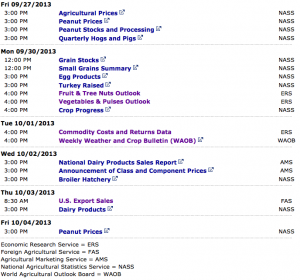
Good Luck for the next week trading!

